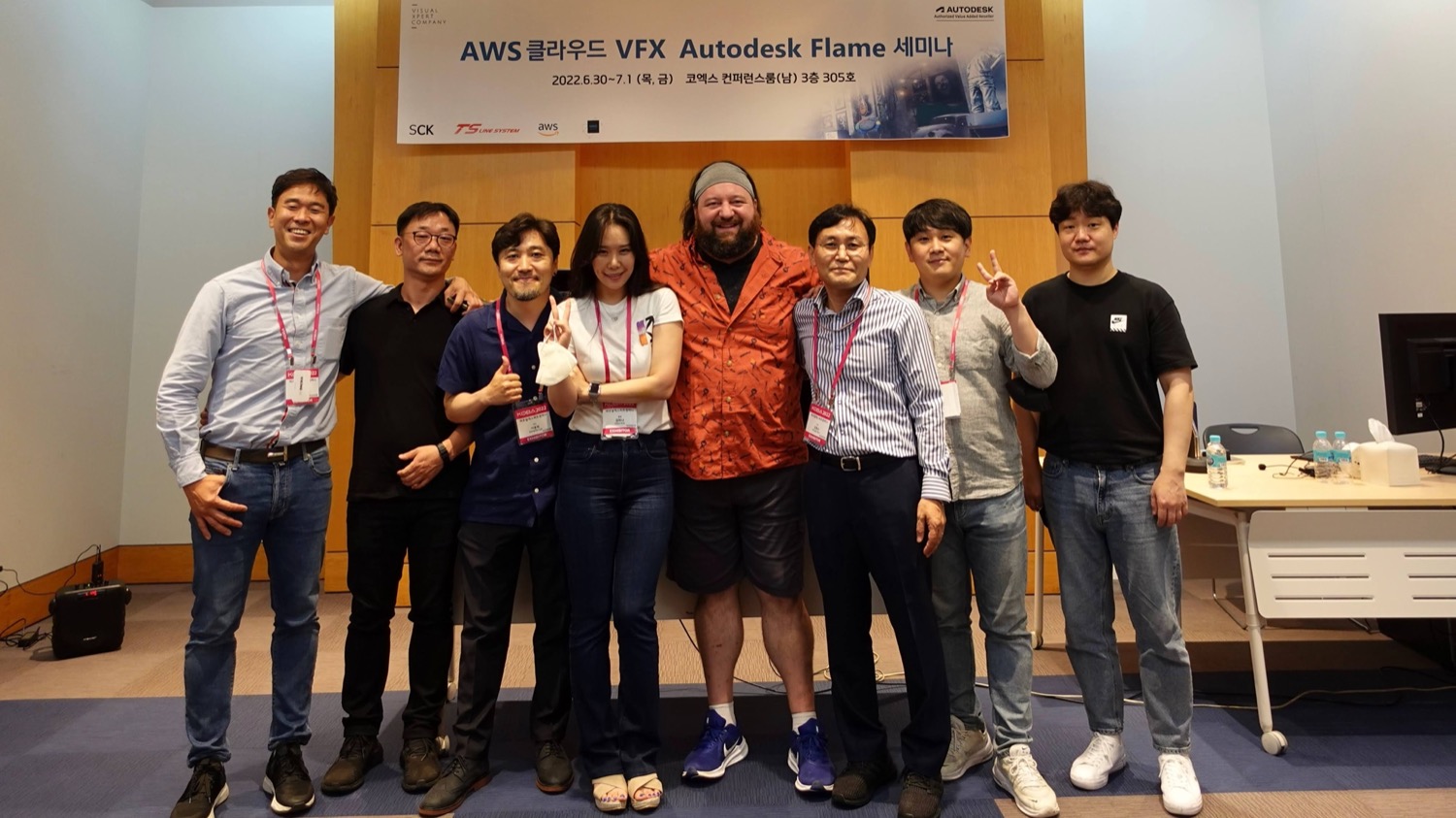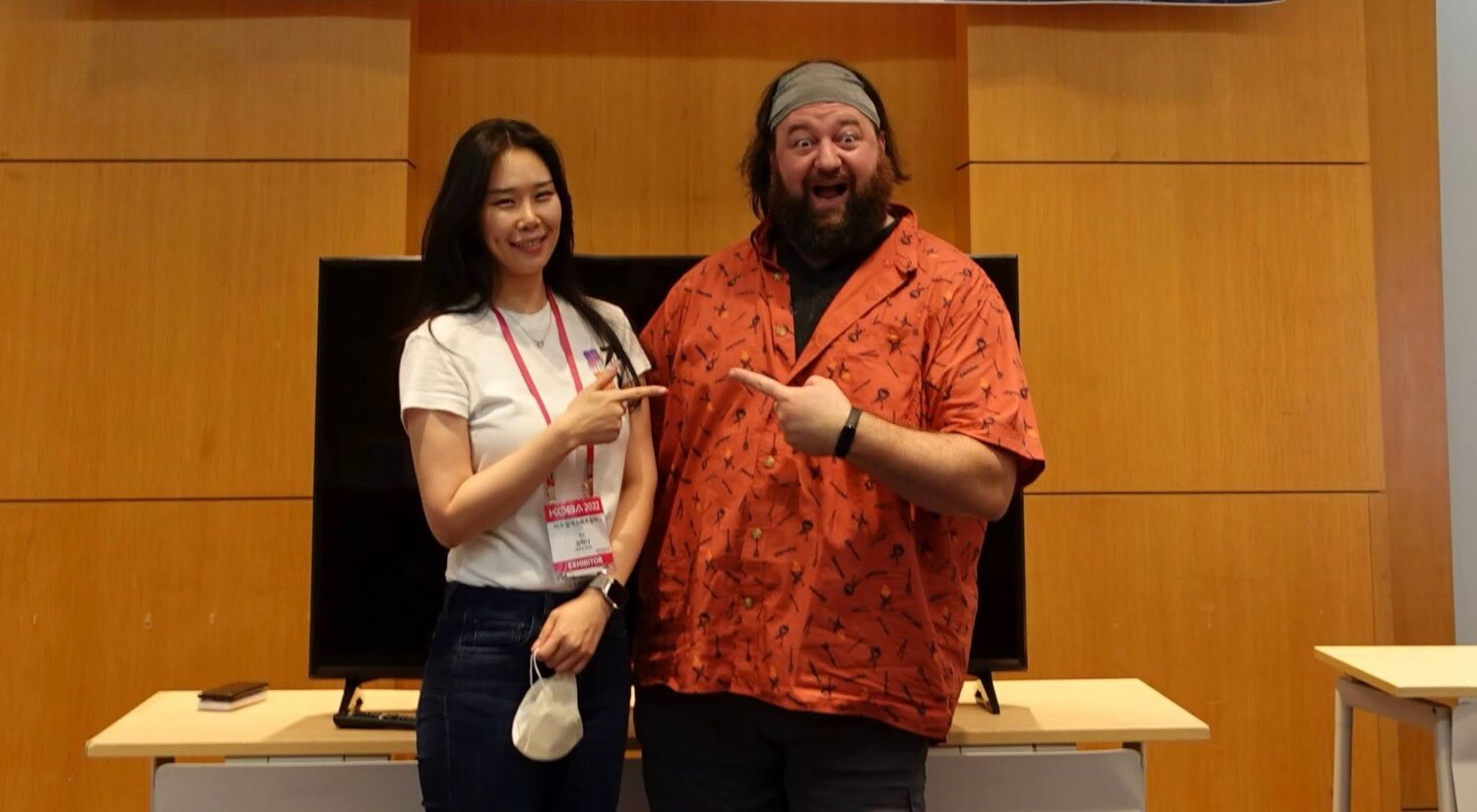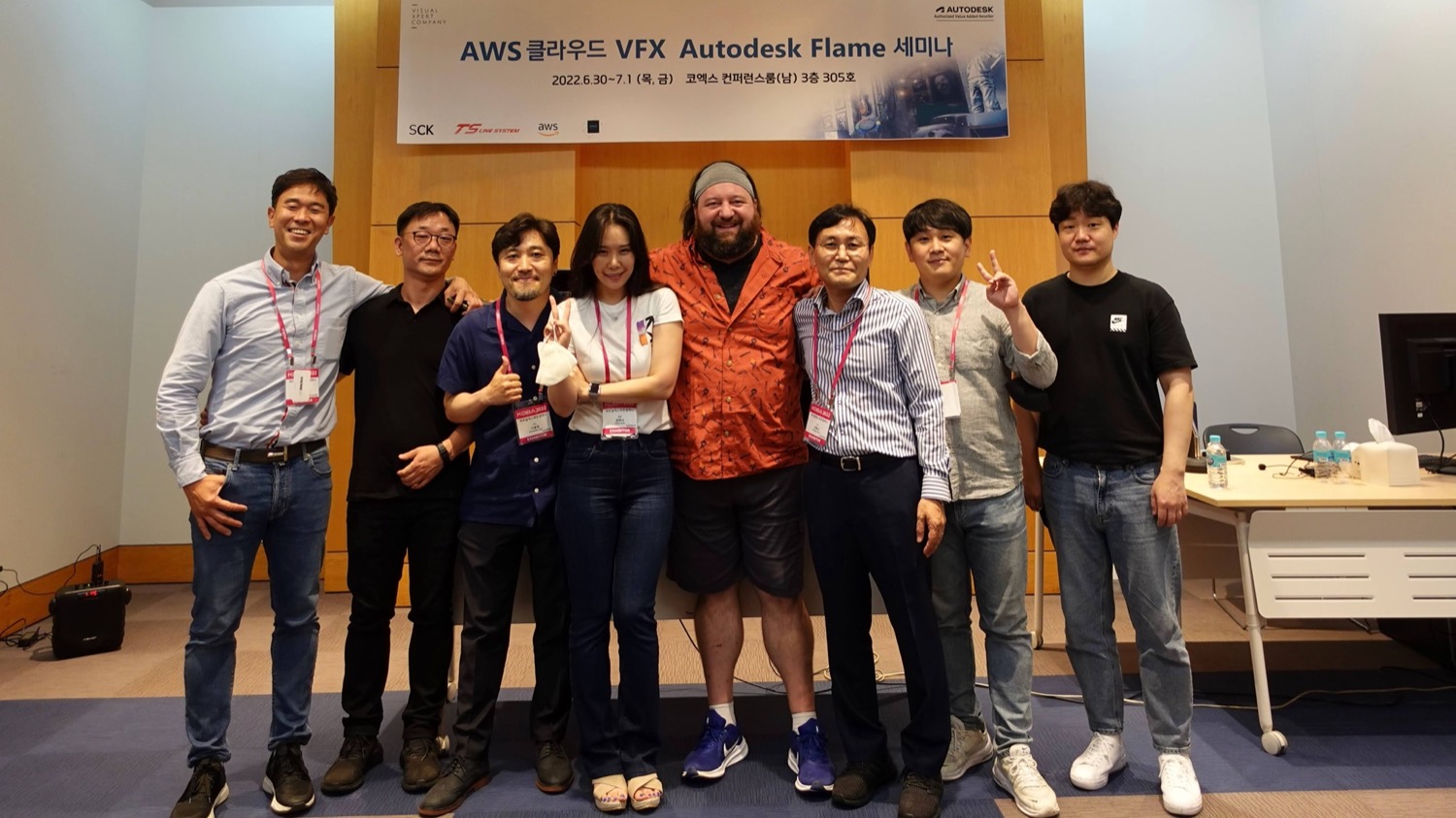This past summer, Republic Flame artist and colorist Bryan Bayley spent a week abroad in Seoul teaching a Flame Master Class during South Korea’s KOBA Show and Exhibition. We sat down with Bryan to learn a little bit about his experience, what he was able to share with his fellow Korean counterparts, and what he learned from his brief trip to Asia.
Remind us again Bryan – exactly how did you end up in South Korea?
Because of Covid uncertainty, there was no official flame user meeting at NAB this year. I took it upon myself to organize an informal meetup, and through that I met Hana Kim from VXC in South Korea. VXC is an Autodesk partner that offers sales and support for Flame and other products. After some conversations with Hana she asked if I would be interested in coming to Korea to teach the Flame artists there. I was absolutely excited for this opportunity and we worked out the plans over the next month. The Korean version of NAB (KOBA) was coming up and so we organized a series of Master Class sessions at the convention center during the conference.
What would you say were the big differences between the NAB Show in Vegas and the KOBA Show in Seoul?
KOBA looks and feels very much like NAB. The same vendors and booths are there showing off their newest technology. I didn’t see anything that jumped out as ‘new’ since NAB, but there were some differences in the focus of the show. VR and Metaverse had a huge presence on the showroom floor. It seems like the Asian market is much more willing to dive into the Metaverse whereas in America there is some hesitancy. I predict the Metaverse being developed and adopted in Asia and then sort of trickle over to America… much like Twitch-style streaming and ‘live’ social media.
Walk us through a little bit of your presentation.
I wasn’t sure what the level of experience would be for a typical Korean Flame artist. Are they working on commercials or feature films? Are they part of a larger pipeline or one-stop shops? The people at VXC suggested I focus on beauty enhancement and other ‘clean up’ effects for commercial production – they wanted to see any tips and tricks that I thought might be interesting. I also learned that Korean Flame artists use the English version of the software, regardless of their fluency in English. So a lot of times there are buttons and settings they don’t fully understand simply because of the language barrier.

I laid out a plan to show my recent work and step through the process to see if anything caught their attention. I recently finished a series of makeup commercials for Mary Kay so this was perfect for beauty work. Typical beauty work includes patching/painting, re-texturing and slimming face shapes. One of the newer tools to Flame is a machine-learning based keyer that quickly finds and isolates areas of the human face. No need to track and roto… the ML keyer does all of the work for you. The Korean Flame artists knew a little bit about this but I was able to show them detailed workflows and what each setting does in the ML Keyer.
Next I showed some set cleanup and set extension. I use a lot of UV/Vertex remapping when I need to add and remove objects from a scene. I showed a few examples of this and they told me this technique was new to them. They tend to stick to traditional paint/roto cleanup which works but can take a lot of time. This method is much quicker when you are in a time crunch.
And finally I talked about Python scripting and ways to automate repetitive tasks. This was all completely new to the Korean Flame Artists. I explained that Flame has access to Python scripting via hooks built into the software. Just about any series of commands can be scripted and repeated. I’m not a Python expert but I know enough to script and automate many tasks. So for the Korean audience I showed a few of my scripts, described how they work and left them with examples to explore and learn more on their own.
What kind of questions did you field from the attendees?
The Korean people tend to be shy and quiet so it was hard to pull questions out of them. But once we got a few questions answered I started seeing more and more excited faces. I answered questions like how specific blend modes work, dealing with anti-aliasing, how to decide which camera tracker to use, how to work with multi-channel EXR files, and how to best apply depth-of-field / IBL / CameraFX inside Action. We also had some good discussions involving everyone… things like running Flame on AWS Cloud, whether the latest Mac hardware is good for Flame, and what plugins/addons everyone is using with Flame.
Overall I am very happy with the Master Class approach and the interactivity with the audience we ended up having. I should also mention that these sessions were done in English with Korean translation. Our translator did an excellent job conveying the technical jargon we were throwing around.
Any big takeaway impressions of Seoul or the Korean people?
The people at VXC were the most excellent hosts you could ask for. Everything at the training sessions was organized and ran smoothly. Outside of the convention they made sure to feed and entertain me with all that Seoul has to offer. I could talk to you for another hour just about the food. I would not have seen and experienced Seoul like I did without their gracious hospitality. And for the Korean people overall I can say I only had pleasant experiences with everyone there.
Are there plans for you to return next year?
After the first KOBA convention day (of three) they were already talking to me about coming back again. The feedback they got from the Flame Artists was great and we talked about other areas of Flame we could cover next time. I will definitely be up for making this a yearly trip!



